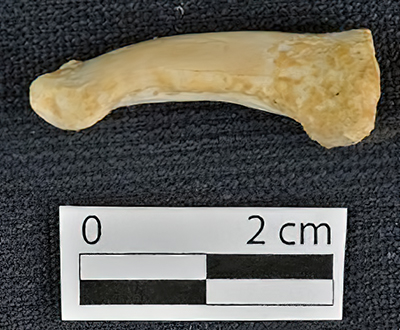Back to Don's Maps
 Back to Archaeological Sites
Back to Archaeological Sites
 Back to the review of hominins
Back to the review of hominins
Homo luzonensis - the most recent living human relative
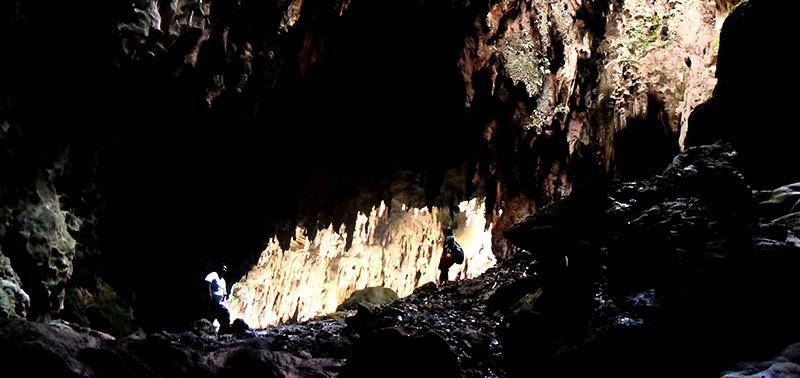
Interior of Callao Cave, Luzon, the Philippines
Photo: Ervin Malicdem
Permission: Creative Commons Attribution-Share Alike 4.0 International license.
Homo luzonensis, is an extinct, possibly pygmy, species of archaic human from the Late Pleistocene of Luzon, the Philippines. Their remains, teeth, and phalanges, are known only from Callao Cave in the northern part of the island dating to before 50 000 years ago. They were initially identified as belonging to modern humans in 2010, but in 2019, after the discovery of more specimens, they were placed into a new species based on the presence of a wide range of traits similar to modern humans as well as to Australopithecus and early Homo.
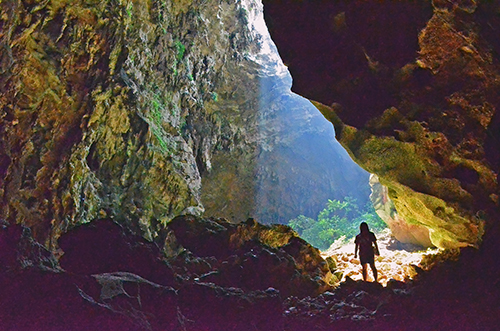
Callao Cave.
Photo: mkirader
Permission: Creative Commons Attribution 2.0 Generic license.
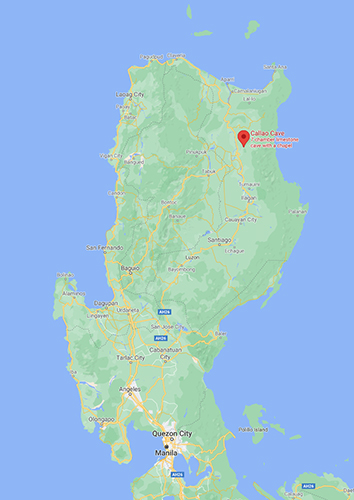
Location of Callao Cave on the island of Luzon, Philippines.
Photo: Google maps
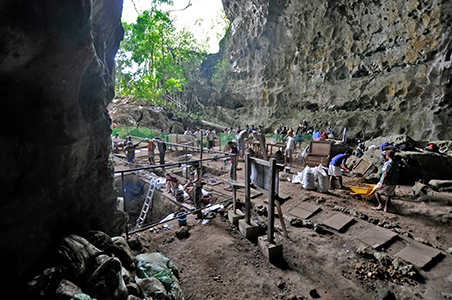
Excavations at Callao Cave.
In 2007, archaeologist Armand Salvador Mijares found a curious bone buried in Callao Cave in the Philippines island of Luzon. Shortly after, he and his colleagues concluded it was a third metatarsal from a human that lived some 67 000 years ago. Together with other findings, it demonstrated that humans could cross the open ocean and reach isolated islands very early on in our history.
But whether that bone belonged to Homo sapiens or another species of our genus was a mystery. Mijares, of the University of the Philippines, and his colleagues have since discovered twelve additional bones and teeth from the same site. Their analysis has revealed that the remains are unlike any other hominin fossils known, and likely represent a distinct species of the Homo genus. The researchers named it Homo luzonensis.
Photo: Callao Cave Archaeology Project.
Text: Katrina Zimmer, https://www.the-scientist.com/news-opinion/new-species-of-human--homo-luzonensis--identified-in-the-philippines-65722
The teeth of Homo luzonensis are consistent with the remains being assigned to a new species.
These are the right upper teeth of the Homo luzonensis individual CCH6. From left to right: two premolars and three molars.
Photo: Florent Détroit
Text and proximal source: https://www.bbc.com/news/science-environment-47873072
Additional text: https://www.businessinsider.com.au/anthropologists-welcome-new-species-homo-luzonensis-2019-4?r=US&IR=T
The finger and toe bones are curved, suggesting climbing was still an important activity for this species. This is a toe bone.
Photo: Florent Détroit, Callao Cave Archaeology Project
Text and proximal source: https://www.irishtimes.com/news/science/new-species-of-extinct-human-discovered-in-the-philippines-1.3856293
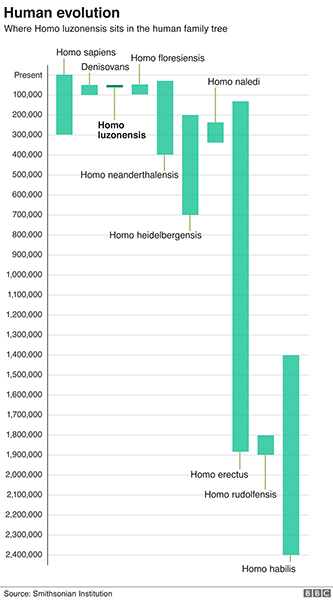
This is a very useful diagram of the timeline for Homo luzonensis and some other hominins.
Photo: Smithsonian Institution
Proximal source: https://www.bbc.com/news/science-environment-47873072
References
- Détroit F., Mijares A.S., Corny J. et al., 2019: A new species of Homo from the Late Pleistocene of the Philippines, Nature, 568, 181–186 (2019). https://doi.org/10.1038/s41586-019-1067-9
Back to Don's Maps
 Back to Archaeological Sites
Back to Archaeological Sites

